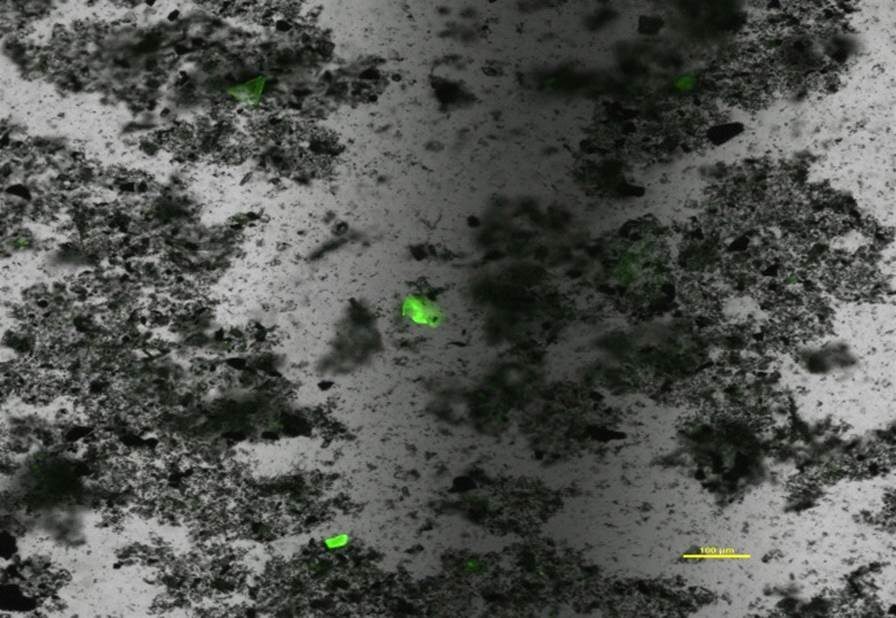A fluorescent dye could provide the solution to mapping and dealing with concentrations of otherwise invisible microplastics in the oceans.

Marine plastic debris has become a global environmental problem, but only the accumulated “gyres” are easy to spot, because 99% of plastic waste is reckoned to consist of tiny particles.
These include the microbeads used in cosmetics and cleaning products, clothing fibres and larger plastics worn down into tiny pellets.
These particles are most abundant in surface seawater and on shorelines, but if not already concealed in marine-life digestive systems are too small to distinguish by eye.
Researchers from the University of Warwick and Plymouth University say that preliminary tests on different plastic polymers indicate that Nile Red, a fluorescent dye that lights up once in contact with certain chemicals, can be used to reveal the whereabouts of these microplastics.
It was used in conjunction with fluorescence microscopy and image-analysis software.
The team took samples of beach sand and surface seawater from the Plymouth coast and analysed them for microplastics using both their staining technique and traditional methods. To ensure that the dye didn’t mark similar-sized materials such as fats or wood fragments, the scientists flushed samples with nitric acid.
They found that their relatively inexpensive method allowed large numbers of samples to be analysed at great speed, and reported finding far more small microplastics under 1mm than expected, and significantly more than when using traditional methods.
Much of the plastic proved to be from broken-down polypropylene, as used in packaging and food containers. The dye method was able to detect particles as small as 5 micrometres – the width of a human hair.
The scientists claim that their method “presents a step change in the ability to detect small microplastics by substituting the subjectivity of human visual sorting with a sensitive and semi-automated procedure”. Dealing with the pollution is a different problem….
The study is published in Environmental Science & Technology.
Divernet – The Biggest Online Resource for Scuba Divers
30-Nov-17

